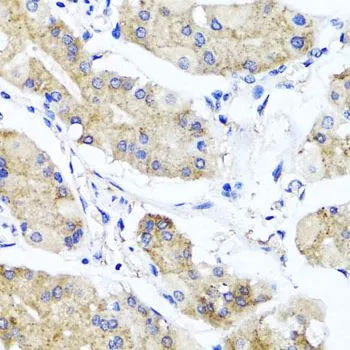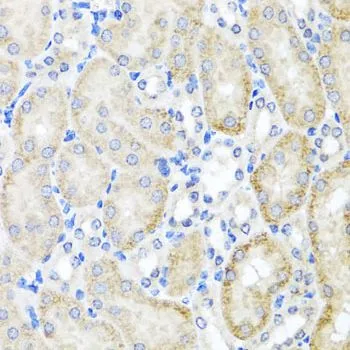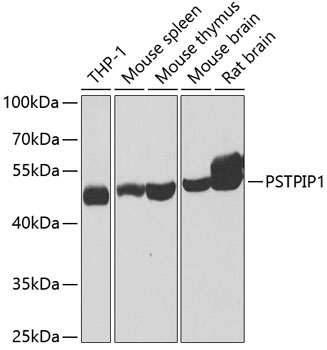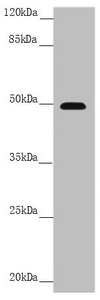
WB analysis of various sample lysates using GTX33443 PSTPIP1 antibody. Dilution : 1:1000 Loading : 25microg per lane
PSTPIP1 antibody
GTX33443
ApplicationsWestern Blot, ImmunoHistoChemistry, ImmunoHistoChemistry Paraffin
Product group Antibodies
TargetPSTPIP1
Overview
- SupplierGeneTex
- Product NamePSTPIP1 antibody
- Delivery Days Customer9
- Application Supplier NoteWB: 1:500 - 1:2000. IHC-P: 1:50 - 1:200. *Optimal dilutions/concentrations should be determined by the researcher.Not tested in other applications.
- ApplicationsWestern Blot, ImmunoHistoChemistry, ImmunoHistoChemistry Paraffin
- CertificationResearch Use Only
- ClonalityPolyclonal
- ConjugateUnconjugated
- Gene ID9051
- Target namePSTPIP1
- Target descriptionproline-serine-threonine phosphatase interacting protein 1
- Target synonymsAICZC, CD2BP1, CD2BP1L, CD2BP1S, H-PIP, PAPA, PAPAS, PSTPIP, proline-serine-threonine phosphatase-interacting protein 1, CD2 antigen-binding protein 1, CD2 cytoplasmic tail-binding protein, CD2-binding protein 1, PEST phosphatase-interacting protein 1
- HostRabbit
- IsotypeIgG
- Protein IDO43586
- Protein NameProline-serine-threonine phosphatase-interacting protein 1
- Scientific DescriptionThis gene encodes a cytoskeletal protein that is highly expressed in hemopoietic tissues. This protein functions via its interaction with several different proteins involved in cytoskeletal organization and inflammatory processes. It binds to the cytoplasmic tail of CD2, an effector of T cell activation and adhesion, downregulating CD2-triggered adhesion. It binds PEST-type protein tyrosine phosphatases (PTP) and directs them to c-Abl kinase to mediate c-Abl dephosphorylation, thereby, regulating c-Abl activity. It also interacts with pyrin, which is found in association with the cytoskeleton in myeloid/monocytic cells and modulates immunoregulatory functions. Mutations in this gene are associated with PAPA (pyogenic sterile arthritis, pyoderma gangrenosum, and acne) syndrome. It is hypothesized that the disease-causing mutations compromise physiologic signaling necessary for the maintenance of a proper inflammatory response. [provided by RefSeq, Mar 2016]
- Storage Instruction-20°C or -80°C,2°C to 8°C
- UNSPSC12352203







